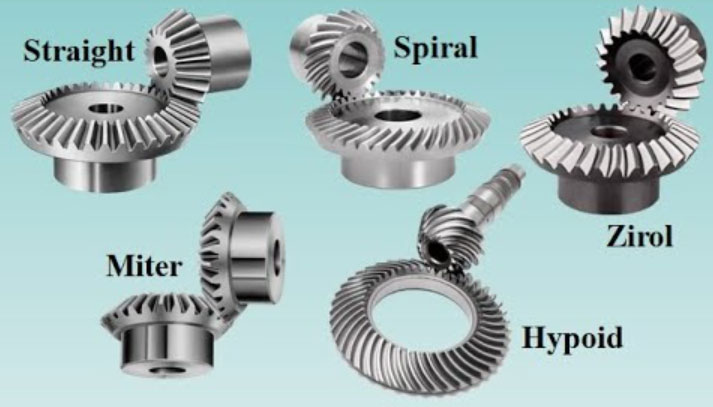Bevel gears play a crucial role in robotics by enabling precise movements and smooth transitions between various robotic components. Here are some key aspects of how bevel gears contribute to robotics:

- Power Transmission: Bevel gears are commonly used in robotic systems to transmit power from motors to different parts of the robot, such as joints, arms, and grippers. They provide efficient torque transfer, allowing robots to perform precise and controlled movements. Bevel gears can handle high loads and transmit power at different angles, making them suitable for transmitting rotational motion in complex robotic systems.
- Angular Transmissions: Robotic systems often require the transmission of rotational motion at different angles. Bevel gears are ideal for this purpose due to their ability to change the direction of power transmission between intersecting or non-parallel shafts. By using bevel gears, robots can achieve angular motions and transitions necessary for various tasks, such as arm movements, rotating sensors, or changing the direction of force.
- Space Optimization: Bevel gears can help optimize space utilization in robotic systems. Their compact and versatile design allows for efficient power transmission within confined spaces. This is particularly beneficial in applications where robots need to operate in tight environments, such as in manufacturing assembly lines, surgical robots, or space-constrained robotic arms.
- Precise Positioning and Control: The accurate tooth profile and engagement of bevel gears enable precise positioning and control in robotic movements. By using high-quality bevel gears with tight tolerances, robots can achieve repeatable and accurate motion control, allowing for precise positioning, alignment, and manipulation of objects. This precision is crucial in applications such as pick-and-place operations, assembly tasks, or complex robot trajectories.
- Reduction of Backlash: Backlash, which is the play or clearance between gear teeth, can be a significant issue in robotics, particularly for applications that require high precision. Bevel gears, especially those with a low pressure angle and high-quality tooth profiles, can minimize backlash and provide backlash-free operation. This reduction in backlash helps ensure accurate and responsive robotic movements, enhancing overall performance and reliability.
- Customization for Robot Design: Bevel gears can be customized to suit specific robotic design requirements. Gear manufacturers can design and produce bevel gears with various tooth profiles, ratios, sizes, and materials to meet the unique needs of different robotic applications. This flexibility allows for the integration of bevel gears into diverse robot architectures, accommodating specific torque, speed, and space constraints.
- Noise Reduction: Bevel gears with optimized tooth profiles and precise meshing can minimize gear noise during robot operation. Noise reduction is particularly important in applications where robots operate in noise-sensitive environments, such as medical settings or collaborative workspaces. The use of spiral bevel gears or hypoid bevel gears can further enhance noise reduction due to their smoother tooth engagement characteristics.
In summary, bevel gears provide crucial power transmission capabilities in robotics, enabling precise movements, angular transmissions, and smooth transitions. Their compact design, precision, and customization options make them suitable for a wide range of robotic applications, contributing to the overall performance and functionality of robotic systems.
